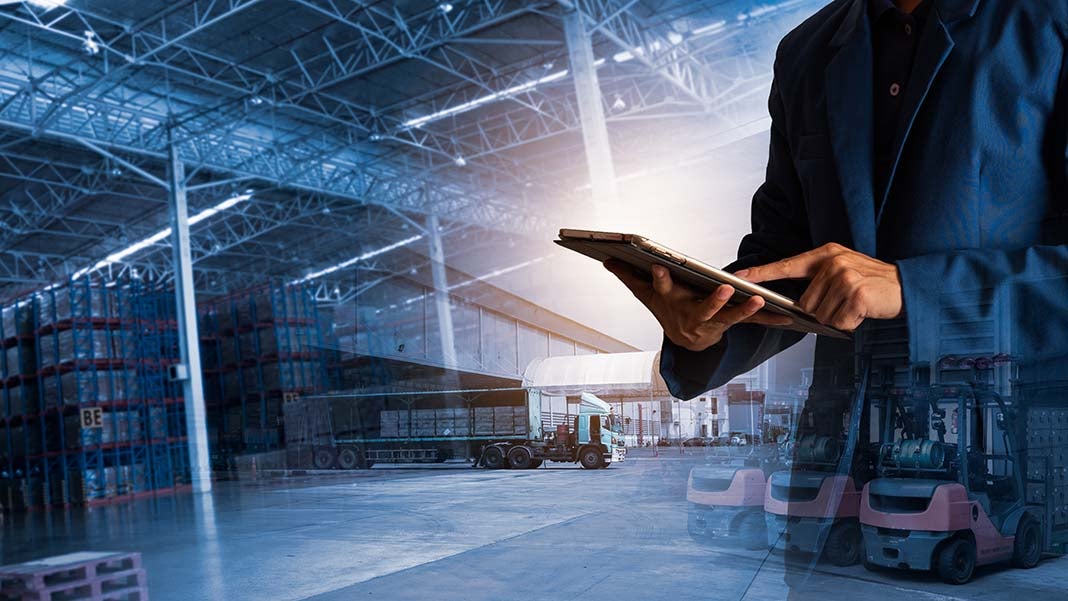
Third-party logistics (3PL) companies are often instrumental in helping customers reach their business goals. That’s particularly true when clients lack the in-house resources to perform necessary tasks themselves and recognize trying to manage things internally interferes with devoting enough time to core competencies.
Investments in third-party logistics technology are often essential for helping service providers keep meeting needs and staying competitive in a challenging business landscape. Here are some specific ways new 3PL technology is changing the industry and benefitting everyone involved.
- Management Systems Supporting Organizational Growth
When 3PL companies pursue growth, decision-makers often realize it’s necessary to invest in technology supporting those aims. Such was the case of a 3PL provider with several warehouses in the United Kingdom measuring over 200,000 square feet. Leaders there recently decided to renew an existing contract with a warehouse management system (WMS) provider.
The company has reportedly achieved no less than 20% year-on-year growth and has more than 100 clients. Company representatives appreciate how the chosen WMS solution is affordable, configurable and compatible with APIs.
They also particularly like a feature enabling faster single-line order processing of multiple products. Thanks to this product offering, the company had a 100% boost in operational efficiency for one of its business lines.
Becoming acquainted with the best WMS methods takes time and effort. However, this example shows devoting the necessary resources to make technology worthwhile for a company can pay off in the long run.
- Robotics Boosting Accuracy Rates With 3PL Technology
Achieving a high accuracy rate is an essential goal for any 3PL provider. Some companies pursue automated order fulfillment to gain a competitive advantage. Doing so typically removes or reduces the reliance on manual steps that could be more error-prone or time-consuming.
Another option is to invest in robotics that can handle certain parts of the process. One 3PL provider took this approach to improve over doing things manually. Employees could pick 30 units per hour when doing things entirely by hand. However, leaders recognized room for improvement and chose a robotics-as-a-service (RaaS) provider to achieve the desired gains. That service model allowed the company to adopt the technology on a particular timeline, eliminating disruption to the ongoing operations.
The robotic technology enabled accuracy rates of 99.9% — particularly impressive considering the average units per hour per picker rose to 334. The robots also caused a 60% reduction in labor needs, which was significant since the company had difficulty hiring enough employees.
Workers also liked the new setup because it allowed robots to handle the task of traveling down warehouse aisles. That’s a necessary duty, but not one most employees view as particularly exciting or fulfilling.
- Blockchains Providing Better Visibility to Customers
The people who rely on 3PL companies often want excellent transparency regarding where their products are at any time. This is particularly important in an e-commerce-driven world where goods often travel across multiple state and country boundaries. Fortunately, third-party logistics technology can enable that transparency.
Consider the case of Verte, a 3PL technology provider. This company relied on the blockchain to help its warehouse customers find inventory and get relevant information about specific products.
Padhu Raman — the company’s chief product officer — explained, “Our warehouse customers can create a synchronized, decentralized supply chain system that allows them to query the blockchain to locate inventory and maintain accurate, accessible information on origin, sizing, materials, price history and more. This adds clarity and certainty to the e-commerce process, improving both vendor and customer experiences.”
The blockchain also helped maintain digital payment compliance. More specifically, it only displayed sensitive information to authorized parties. The solution also allowed those in charge of transactions to set rules for each transaction everyone involved must follow. Since the blockchain stores information on an immutable digital ledger, it provides visibility by enabling every relevant party to view and verify transactions without friction.
- AI Helping Third-Pary Logistics Technology Become More Nimble
Remaining profitable in the third-party logistics industry requires responding quickly to changing conditions. The right 3PL technology solution helps leaders do that while facing challenging circumstances.
Brian Kirst is the co-founder and chief strategy officer at Resurge, a 3PL provider currently operating two distribution centers. His company uses an artificial intelligence training tool to tweak the WMS more efficiently. Kirst and his colleagues previously relied on manufacturer support when making WMS changes. However, the AI tool has allowed for faster alterations — and the company’s customers benefit from the speed-to-value boost.
Kirst explained the AI tool provided support during challenges associated with new products, peak periods and unexpected demand spikes. More specifically, company representatives can enact WMS rule changes in minutes with no downtime.
Another benefit this tech solution offers is the ability to create new rules or edit existing ones without traveling to the warehouse. The tool lets people make those changes remotely, which was particularly helpful when the COVID-19 pandemic restricted work operations and limited the number of people in facilities.
- Dynamic Pricing Tools Supporting Better Decision-Making
When third-party logistics providers can provide clients with up-to-date and reliable pricing information, they’re more likely to have loyal customers. C.H. Robinson rolled out 3PL technology consisting of a digital tool capitalizing on dynamic pricing.
The company reportedly provided users with $1 million of these quotes in the first quarter of 2022. That amount represented two-thirds of the company’s spot business pricing in that period. Since the pricing engine provided instant rates for spot loads, it saved customers thousands of hours per month and eliminated associated manual duties.
The people who receive digital quotes appreciate how they can engage in smarter decision-making due to the competitive, real-time market rates. Additionally, users who had route-guide implementations in their transportation management systems were especially likely to see cost savings. They were also less likely to experience penalties related to spot-rate premiums.
Deploying a website solution like this can’t happen overnight and people must not rush the overall process. However, building third-party logistics technology to meet specific client needs is an excellent way to show customers a company is in tune with its target market and ready to respond accordingly.
Technology Investments Can Make 3PL Companies More Resilient
These five examples show how it often makes good business sense to put resources into third-party logistics technology. However, there’s no universally best option for all companies that would benefit from it. Leaders must take time to understand the kinds of tools, platforms and other resources, then create a shortlist of possibilities to pursue.
2344 Views












